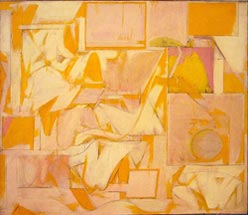John Walker is an English painter and printmaker. He has been called "one of the standout abstract painters of the last 50 years."

Jack Tworkov was an American abstract expressionist painter.
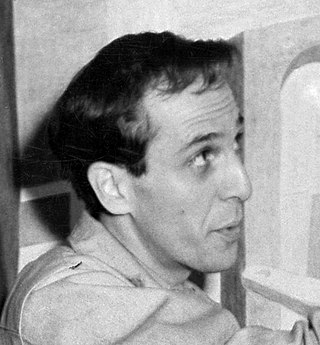
Philip Guston, was a Canadian American painter, printmaker, muralist and draftsman. Early in his five decade career, muralist David Siquieros described him as one of "the most promising painters in either the US or Mexico," in reference to his antifascist fresco The Struggle Against Terror, which "includes the hooded figures that became a lifelong symbol of bigotry for the artist." "Guston worked in a number of artistic modes, from Renaissance-inspired figuration to formally accomplished abstraction," and is now regarded one of the "most important, powerful, and influential American painters of the last 100 years." He also frequently depicted racism, antisemitism, fascism and American identity, as well as, especially in his later most cartoonish and mocking work, the banality of evil. In 2013, Guston's painting To Fellini set an auction record at Christie's when it sold for $25.8 million.
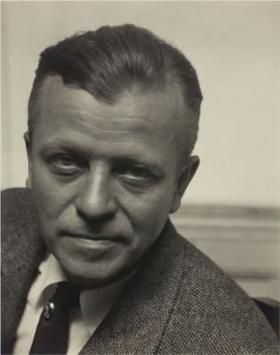
Arthur Garfield Dove was an American artist. An early American modernist, he is often considered the first American abstract painter. Dove used a wide range of media, sometimes in unconventional combinations, to produce his abstractions and his abstract landscapes. Me and the Moon from 1937 is a good example of an Arthur Dove abstract landscape and has been referred to as one of the culminating works of his career. Dove made a series of experimental collages in the 1920s. He also experimented with techniques, combining paints like hand mixed oil or tempera over a wax emulsion as exemplified in Dove's 1938 painting Tanks, in the collection of the Boston Museum of Fine Arts.
Al Held was an American Abstract expressionist painter. He was particularly well known for his large scale Hard-edge paintings. As an artist, multiple stylistic changes occurred throughout his career, however, none of these occurred at the same time as any popular emerging style or acted against a particular art form. In the 1950s his style reflected the abstract expressionist tone and then transitioned to a geometric style in the 1960s. During the 1980s, there was a shift into painting that emphasized bright geometric space that's deepness reflected infinity. From 1963 to 1980 he was a professor of art at Yale University.
Nicholas Krushenick was an American abstract painter, collagist and printmaker whose mature artistic style straddled Pop Art, Op Art, Minimalism and Color Field. He was active in the New York art scene from the mid-1950s to the mid-1970s, before he began focusing his time as a professor at the University of Maryland. Initially experimenting with a more derivative Abstract Expressionist style, by the mid-1960s he had developed his own unique approach, painting increasingly decisive compositions marked by bold, colorful, geometric fields and forms simultaneously flattened and amplified by strong black outlines, in a style that eventually became known as Pop abstraction. In 1984, the biographical dictionary World Artists, 1950-1980 observed that Krushenick "has been called the only truly abstract Pop painter." Today, as other artists have been carefully folded into the same paradoxical genre, Krushenick is not only considered a singular figure within that style but also its pioneer, earning him the title "the father of Pop abstraction."

Don Eddy is a contemporary representational painter. He gained recognition in American art around 1970 amid a group of artists that critics and dealers identified as Photorealists or Hyperrealists, based on their work's high degree of verisimilitude and use of photography as a resource material. Critics such as Donald Kuspit have resisted such labels as superficially focused on obvious aspects of his painting while ignoring its specific sociological and conceptual bases, dialectical relationship to abstraction, and metaphysical investigations into perception and being; Kuspit wrote: "Eddy is a kind of an alchemist … [his] art transmutes the profane into the sacred—transcendentalizes the base things of everyday reality so that they seem like sacred mysteries." Eddy has worked in cycles, which treat various imagery from different formal and conceptual viewpoints, moving from detailed, formal images of automobile sections and storefront window displays in the 1970s to perceptually challenging mash-ups of still lifes and figurative/landscapes scenes in the 1980s to mysterious multi-panel paintings in his latter career. He lives in New York City with his wife, painter Leigh Behnke.
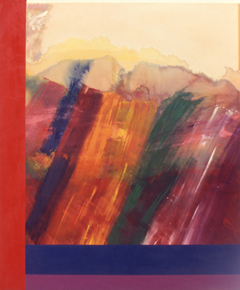
Ronnie Landfield is an American abstract painter. During his early career from the mid-1960s through the 1970s his paintings were associated with Lyrical Abstraction, and he was represented by the David Whitney Gallery and the André Emmerich Gallery.
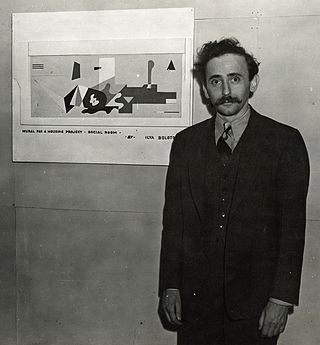
Ilya Bolotowsky was a leading early 20th-century Russian-American painter in abstract styles in New York City. His work, a search for philosophical order through visual expression, embraced cubism and geometric abstraction and was influenced by Dutch painter Piet Mondrian.

Jack Reilly is an American artist known for his complex shaped canvas paintings. His work is widely exhibited and included in public and private collections internationally.

20th-century Western painting begins with the heritage of late-19th-century painters Vincent van Gogh, Paul Cézanne, Paul Gauguin, Georges Seurat, Henri de Toulouse-Lautrec, and others who were essential for the development of modern art. At the beginning of the 20th century, Henri Matisse and several other young artists including the pre-cubist Georges Braque, André Derain, Raoul Dufy and Maurice de Vlaminck, revolutionized the Paris art world with "wild", multi-colored, expressive landscapes and figure paintings that the critics called Fauvism. Matisse's second version of The Dance signified a key point in his career and in the development of modern painting. It reflected Matisse's incipient fascination with primitive art: the intense warm color of the figures against the cool blue-green background and the rhythmical succession of the dancing nudes convey the feelings of emotional liberation and hedonism.
R. H. Quaytman is an American contemporary artist, best known for paintings on wood panels, using abstract and photographic elements in site-specific "Chapters", now numbering 35. Each chapter is guided by architectural, historical and social characteristics of the original site. Since 2008, her work has been collected by a number of modern art museums. She is also an educator and author based in Connecticut.
Jack Albert Youngerman was an American artist known for his constructions and paintings.

Nassos Daphnis was a Greek-born American abstract painter, sculptor and tree peony breeder.
Alvin D. Loving Jr., better known as Al Loving, was an African-American abstract expressionist painter. His work is known for hard-edge abstraction, fabric constructions, and large paper collages, all exploring complicated color relationships.

Jake Berthot (1939–2014) was an American artist whose abstract paintings contained elements of both the minimalist and expressionist styles. During the first 36 years of his career his paintings were entirely non-figurative. His style changed in 1995 when he moved his studio from New York City to a rural community in upstate New York. While continuing to be abstract his paintings thereafter contained figurative elements and were seen to have greater emotional content. Throughout his career his work frequently appeared in solo and group exhibitions in both commercial and public galleries. It has been collected by the Museum of Modern Art, Metropolitan Museum of Art, Guggenheim Museum, National Gallery of Art, and other major American art museums. He received a Guggenheim Fellowship in 1981 and a National Endowment for the Arts grant in 1983.
Will Insley was an American painter, architect, and planner of utopian urban models. As a painter of geometric abstraction, he is known for his large-area geometrical picture elements.

David Row is a contemporary abstract painter associated with the movements of Postmodern Painting and Conceptual Abstraction. His primary aesthetic has evolved around a language of painterly fragmented geometric abstraction that is usually formed on shaped canvases and installations. Row lives and works in both New York City and Cushings Island, Maine. He is married to former AIGA NY Board president Kathleen Schenck Row.

Joanna Pousette-Dart is an American abstract artist, based in New York City. She is best known for her distinctive shaped-canvas paintings, which typically consist of two or three stacked, curved-edge planes whose arrangements—from slightly precarious to nested—convey a sense of momentary balance with the potential to rock, tilt or slip. She overlays the planes with meandering, variable arabesque lines that delineate interior shapes and contours, often echoing the curves of the supports. Her work draws on diverse inspirations, including the landscapes of the American Southwest, Islamic, Mozarabic and Catalan art, Chinese landscape painting and calligraphy, and Mayan art, as well as early and mid-20th-century modernism. Critic John Yau writes that her shaped canvasses explore "the meeting place between abstraction and landscape, quietly expanding on the work of predecessors", through a combination of personal geometry and linear structure that creates "a sense of constant and latent movement."
Thomas Nozkowski was an American contemporary painter. He achieved a place of prominence through his small scale paintings and drawings that push the limits of visual language.
